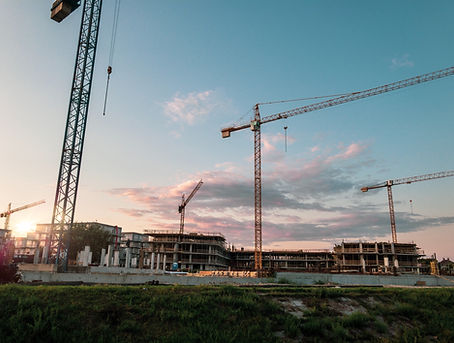
Biodiversity Net Gain (BNG)
step-by-step guide and how we help
Biodiversity Net Gain (BNG) requires most developments in England to leave biodiversity in a measurably better state than before development — typically a minimum 10% uplift calculated with the official metric — and to secure habitat delivery and management for the long term.
1
Engage ecological advice at the earliest stage
We recommend you commission an ecologist as soon as a site is being considered (concept or pre-application stage). Early input lets biodiversity improvements be designed into the masterplan — avoiding costly redesigns later and improving the chance of planning approval.
2
Baseline surveys and protected-species checks
A qualified ecologist carries out an initial habitat survey and any necessary protected-species surveys to establish the pre-development baseline. This baseline is the reference point used in all BNG calculations.
3
Calculate baseline biodiversity using the DEFRA Metric
We model pre- and post-development biodiversity value using the nationally recognised Biodiversity Metric (DEFRA tool). The metric scores habitats by type, size, condition and distinctiveness so you can see whether the proposed design achieves the legally required uplift.
4
Apply the mitigation hierarchy
Design must follow the mitigation hierarchy: avoid impacts where possible, then minimise unavoidable impacts, and only then use compensation/offsets (on- or off-site) as last resort. Your BNG plan must clearly demonstrate how each step was considered.
5
Design measures to achieve net gain
On-site measures may include habitat restoration and enhancement (e.g., grassland and wetland restoration), new planting (woodland, hedgerow), green infrastructure (living roofs, SuDS), and wildlife-friendly landscaping. Where on-site gains are insufficient we identify suitable off-site options (habitat banks or unit purchases).
6
Prepare the BNG documentation and long-term management plan
We prepare the BNG Assessment, BNG Plan and a Habitat Management and Monitoring Plan (HMMP). These documents include metric calculations (pre/post), detailed habitat prescriptions, monitoring schedules and the legal/financial mechanisms to secure delivery and 30-year management.
7
Secure legal agreements and units if needed
If off-site units or habitat banks are used, these must be legally secured and funded for the required management period. We can source suitable units and handle the legal/contractual steps so the planning condition is satisfied.
8
Construction-phase implementation and ecological supervision
During construction we provide ecological supervision (Ecological Clerk of Works), ensure mitigation is implemented correctly, and advise on site protection for retained habitats and species.
9
Post-development monitoring and adaptive management
BNG is a long-term obligation — habitat performance must be monitored and managed over decades. We deliver monitoring reports, adapt management prescriptions when required, and handle LPA reporting to demonstrate ongoing compliance. Many habitats and legal agreements require management commitments for 30 years.
Why choose Halcrow Wild for your BNG work
-
End-to-end service — from pre-application ecology advice and baseline surveys to metric calculations, habitat design, procurement of units/habitat banks, legal security, Ecological Clerk of Works and 30-year HMMP delivery.
-
Early design input — we work with architects and designers at concept stage so biodiversity is integrated, reducing cost and risk later.
-
Metric and compliance expertise — we use the DEFRA Biodiversity Metric and familiarise our plans with local authority priorities so submissions meet planning expectations.
-
Practical delivery — habitat creation, planting designs and long-term management are created with pragmatic maintenance regimes to achieve durable gains.
-
Unit sourcing and legal support — we identify legitimate off-site options when needed and help secure the legal mechanisms required by planning conditions.


Typical BNG deliverables we provide
-
Site visit and baseline habitat survey (with protected species checks where required).
-
BNG Assessment and Metric calculations (pre/post).
-
BNG Plan and Habitat Management & Monitoring Plan (HMMP).
-
Construction-phase Ecological Clerk of Works (ECoW).
-
Sourcing and securing off-site BNG units or habitat bank agreements.
-
Long-term monitoring reports and adaptive management.
(We can tailor packages to fit small sites, large developments or phased programmes.)
FAQs
-
Q: What minimum gain is required?
A: Most developments must deliver at least a 10% measurable uplift (check local policy/exemptions apply).
-
Q: How long must habitats be managed?
A: Legal and planning arrangements commonly require habitat management for multi-decade periods (commonly 30 years) to ensure the gains are maintained.
Next steps
how we can help you today
-
Free initial call / site review — we’ll advise whether your site is likely to need full BNG and what surveys are needed.
-
Quick quote & scope — receive a clear, no-nonsense quote for surveys, metric work, design and long-term management.
-
Start pre-application support — we’ll join planning/design meetings, prepare the BNG report and liaise with the local authority on your behalf.



